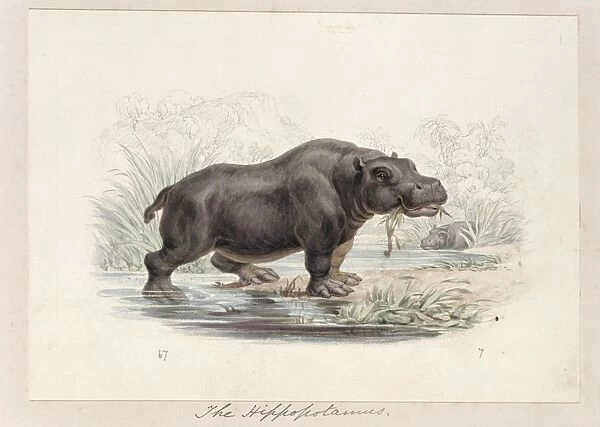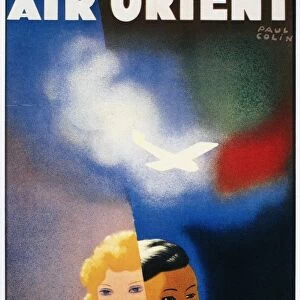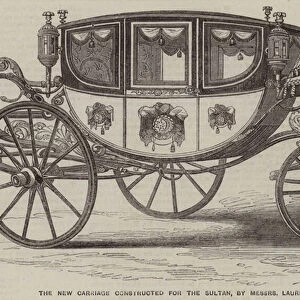Hippopotamus amphibius, hippopotamus
![]()

Wall Art and Photo Gifts from Mary Evans Picture Library
Hippopotamus amphibius, hippopotamus
Plate 67 The Hippopotamus. Original watercolour drawing from The Naturalists Library, Mammalia, Vol. 2, 1833-1843, by Sir William Jardine (1800-1874)
Mary Evans Picture Library makes available wonderful images created for people to enjoy over the centuries
Media ID 8580639
© Mary Evans Picture Library 2015 - https://copyrighthub.org/s0/hub1/creation/maryevans/MaryEvansPictureID/10707953
1800 1874 Aquatic Artiodactyl Artiodactyla Epitheria Eutheria Even Toed Ungulate Habitat Hippo Hippopotamidae Hippopotamus Hippopotamus Amphibius Jardine Mammalia Naturalist
EDITORS COMMENTS
This stunning watercolor illustration depicts the majestic Hippopotamus amphibius, also known as the common hippopotamus, in its natural habitat. The hippopotamus is the largest living non-marine mammal and is an even-toed ungulate, belonging to the family Hippopotamidae, order Artiodactyla, and class Mammalia. This particular illustration is taken from The Naturalist's Library, Mammalia, Vol. 2, published between 1833 and 1843. The artwork was created by the renowned Scottish naturalist and author, Sir William Jardine (1800-1874). The hippopotamus is native to sub-Saharan Africa and spends most of its day submerged in water to keep its large body cool and to protect itself from the sun. This semi-aquatic mammal is often referred to as a 'river horse' due to its hippo-like appearance and its affinity for water. The hippopotamus is a herbivore and spends most of its waking hours feeding on grasses and other vegetation. The intricate details in this original drawing showcase the unique features of the hippopotamus, such as its large, powerful jaws, which it uses to crush bones and vegetation, and its distinctive rounded back and short, stocky legs. The illustration also highlights the hippopotamus's large, round ears, which help it to regulate its body temperature and communicate with other hippos. Sir William Jardine's illustration is a testament to the meticulous work of 19th-century naturalists who dedicated their lives to documenting the natural world. The Naturalist's Library, Mammalia, Vol. 2, is a valuable resource for researchers, students, and anyone interested in the natural history of mammals, providing a detailed and accurate record of the world's diverse animal life.
MADE IN THE UK
Safe Shipping with 30 Day Money Back Guarantee
FREE PERSONALISATION*
We are proud to offer a range of customisation features including Personalised Captions, Color Filters and Picture Zoom Tools
SECURE PAYMENTS
We happily accept a wide range of payment options so you can pay for the things you need in the way that is most convenient for you
* Options may vary by product and licensing agreement. Zoomed Pictures can be adjusted in the Basket.






